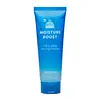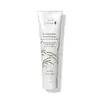What's inside
What's inside
 Key Ingredients
Key Ingredients

 Benefits
Benefits

 Concerns
Concerns

 Ingredients Side-by-side
Ingredients Side-by-side

Water
Skin ConditioningGlycerin
HumectantPolyglyceryl-4 Caprate
EmulsifyingDipropylene Glycol
HumectantPolyglyceryl-6 Caprylate
EmulsifyingGlyceryl Polymethacrylate
Acrylates/C10-30 Alkyl Acrylate Crosspolymer
Emulsion StabilisingArginine
MaskingHydroxyacetophenone
AntioxidantCitrus Aurantium Bergamia Fruit Oil
MaskingEthylhexylglycerin
Skin ConditioningDisodium EDTA
Allantoin
Skin ConditioningLavandula Angustifolia Oil
MaskingPanthenol
Skin ConditioningPelargonium Graveolens Flower Oil
MaskingGluconolactone
Skin ConditioningBetaine Salicylate
AntimicrobialCitric Acid
BufferingCaprylic/Capric Triglyceride
MaskingAdansonia Digitata Seed Oil
EmollientHydrogenated Lecithin
EmulsifyingButylene Glycol
HumectantCeramide NP
Skin Conditioning1,2-Hexanediol
Skin ConditioningHydrogenated Phosphatidylcholine
EmulsifyingCentella Asiatica Extract
CleansingSucrose Stearate
EmollientCetearyl Alcohol
EmollientCeramide Ns
Skin ConditioningCeramide As
Skin ConditioningCeramide EOP
Skin ConditioningCeramide AP
Skin ConditioningAsiatic Acid
Skin ConditioningAsiaticoside
AntioxidantSodium Hyaluronate
HumectantMadecassic Acid
Skin ConditioningMadecassoside
AntioxidantWater, Glycerin, Polyglyceryl-4 Caprate, Dipropylene Glycol, Polyglyceryl-6 Caprylate, Glyceryl Polymethacrylate, Acrylates/C10-30 Alkyl Acrylate Crosspolymer, Arginine, Hydroxyacetophenone, Citrus Aurantium Bergamia Fruit Oil, Ethylhexylglycerin, Disodium EDTA, Allantoin, Lavandula Angustifolia Oil, Panthenol, Pelargonium Graveolens Flower Oil, Gluconolactone, Betaine Salicylate, Citric Acid, Caprylic/Capric Triglyceride, Adansonia Digitata Seed Oil, Hydrogenated Lecithin, Butylene Glycol, Ceramide NP, 1,2-Hexanediol, Hydrogenated Phosphatidylcholine, Centella Asiatica Extract, Sucrose Stearate, Cetearyl Alcohol, Ceramide Ns, Ceramide As, Ceramide EOP, Ceramide AP, Asiatic Acid, Asiaticoside, Sodium Hyaluronate, Madecassic Acid, Madecassoside
Morus Alba Root Water
Skin ConditioningGlycerin
HumectantPotassium Cocoate
EmulsifyingLonicera Japonica Flower Extract
Skin ConditioningCyamopsis Tetragonoloba Gum
Emulsion StabilisingCitrus Limon Bud Extract
HumectantCarica Papaya Fruit Extract
Skin ConditioningAnanas Sativus Fruit Extract
Skin ConditioningRice Ferment Filtrate
Skin ConditioningGlycyrrhiza Glabra Root Extract
BleachingSalix Alba Extract
Skin ConditioningArctostaphylos Uva-Ursi Leaf Extract
Skin ConditioningSolanum Lycopersicum Calyx Extract
Skin ConditioningLactobacillus
Skin ConditioningNiacinamide
SmoothingLentinus Edodes Extract
Skin ConditioningAscorbic Acid
AntioxidantCitrus Aurantium Bergamia Fruit Oil
MaskingCedrus Atlantica Bark Oil
MaskingVetiveria Zizanoides Root Oil
MaskingCitrus Sinensis Peel Oil Expressed
PerfumingSalvia Officinalis Oil
MaskingLavandula Angustifolia Oil
MaskingMorus Alba Root Water, Glycerin, Potassium Cocoate, Lonicera Japonica Flower Extract, Cyamopsis Tetragonoloba Gum, Citrus Limon Bud Extract, Carica Papaya Fruit Extract, Ananas Sativus Fruit Extract, Rice Ferment Filtrate, Glycyrrhiza Glabra Root Extract, Salix Alba Extract, Arctostaphylos Uva-Ursi Leaf Extract, Solanum Lycopersicum Calyx Extract, Lactobacillus, Niacinamide, Lentinus Edodes Extract, Ascorbic Acid, Citrus Aurantium Bergamia Fruit Oil, Cedrus Atlantica Bark Oil, Vetiveria Zizanoides Root Oil, Citrus Sinensis Peel Oil Expressed, Salvia Officinalis Oil, Lavandula Angustifolia Oil
Alternatives
Ingredients Explained
These ingredients are found in both products.
Ingredients higher up in an ingredient list are typically present in a larger amount.
Citrus Aurantium Bergamia Fruit Oil is the oil from the bergamot orange. It is native to Italy.
This ingredient is used to add fragrance to products. It contains limonene, linalool, and linalyl acetate.
The term 'fragrance' is not regulated in many countries. In many cases, it is up to the brand to define this term. For instance, many brands choose to label themselves as "fragrance-free" because they are not using synthetic fragrances. However, their products may still contain ingredients such as essential oils that are considered a fragrance.
When used topically, Citrus Aurantium Bergamia Fruit Oil is a photosensitizer due to its furanocoumarins. Photosensitizers make the skin and eyes much more sensitive to sunlight. Photosensitizers are linked to skin cancer.
However, more cosmetics using Citrus Aurantium Bergamia Fruit Oil are removing the furanocoumarins.
Bergamot oil was also found to have anti-inflammatory, antibacterial and antifungal properties.
Learn more about Citrus Aurantium Bergamia Fruit OilGlycerin is already naturally found in your skin. It helps moisturize and protect your skin.
A study from 2016 found glycerin to be more effective as a humectant than AHAs and hyaluronic acid.
As a humectant, it helps the skin stay hydrated by pulling moisture to your skin. The low molecular weight of glycerin allows it to pull moisture into the deeper layers of your skin.
Hydrated skin improves your skin barrier; Your skin barrier helps protect against irritants and bacteria.
Glycerin has also been found to have antimicrobial and antiviral properties. Due to these properties, glycerin is often used in wound and burn treatments.
In cosmetics, glycerin is usually derived from plants such as soybean or palm. However, it can also be sourced from animals, such as tallow or animal fat.
This ingredient is organic, colorless, odorless, and non-toxic.
Glycerin is the name for this ingredient in American English. British English uses Glycerol/Glycerine.
Learn more about GlycerinLavandula Angustifolia Oil is more commonly known as lavender essential oil. It is considered a fragrancing ingredient.
Lavender imparts a famous scent. While the smell is lovely, this ingredient and may sensitize skin in topical products. This is because about 85% of the oil is made up of linalool and linalyl acetate.
When exposed to air, these two compounds become strong allergens. This ingredient exhibits cytotoxicity at low concentrations; amounts of 0.25% have been shown to damage skin cells.
A study from Japan found this ingredient caused lavender sensitivity after widespread exposure.
Lavender essential oil has some antimicrobial, antibacterial, and anti-inflammatory properties. However, the cons of this ingredient may outweight the pros.
More research is needed to confirm lavender essential oil's effects when used in aromatherapy.
Lavandula Angustifolia is known as the English Lavender and famous for creating purple fields in Provence, France.
Learn more about Lavandula Angustifolia Oil